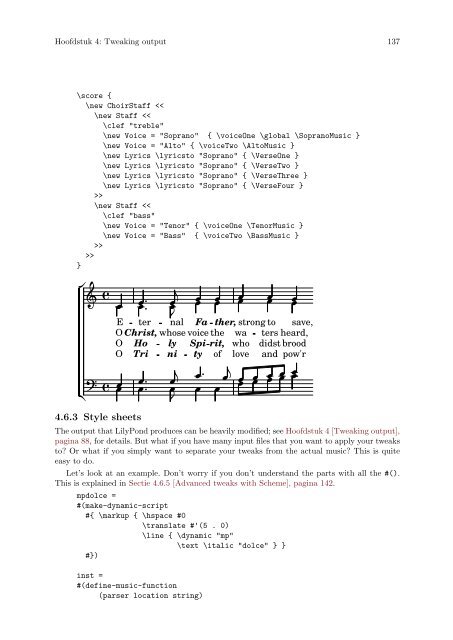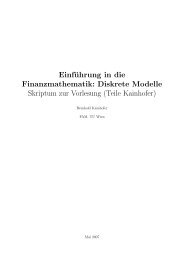LilyPond Beginnershandleiding
LilyPond Beginnershandleiding
LilyPond Beginnershandleiding
Create successful ePaper yourself
Turn your PDF publications into a flip-book with our unique Google optimized e-Paper software.
Hoofdstuk 4: Tweaking output 137<br />
\score {<br />
\new ChoirStaff <br />
\new Staff ><br />
>><br />
}<br />
<br />
<br />
<br />
<br />
<br />
<br />
4.6.3 Style sheets<br />
<br />
<br />
E ter nal<br />
O Christ, whose<br />
O Ho ly<br />
O Tri ni<br />
<br />
<br />
<br />
<br />
<br />
<br />
<br />
<br />
<br />
<br />
<br />
<br />
<br />
<br />
to<br />
ters<br />
didst<br />
and<br />
<br />
<br />
love<br />
Fa ther, strong save,<br />
voice the wa heard,<br />
Spi rit, who brood<br />
ty of<br />
pow'r<br />
<br />
<br />
<br />
<br />
The output that <strong>LilyPond</strong> produces can be heavily modified; see Hoofdstuk 4 [Tweaking output],<br />
pagina 88, for details. But what if you have many input files that you want to apply your tweaks<br />
to? Or what if you simply want to separate your tweaks from the actual music? This is quite<br />
easy to do.<br />
Let’s look at an example. Don’t worry if you don’t understand the parts with all the #().<br />
This is explained in Sectie 4.6.5 [Advanced tweaks with Scheme], pagina 142.<br />
mpdolce =<br />
#(make-dynamic-script<br />
#{ \markup { \hspace #0<br />
\translate #'(5 . 0)<br />
\line { \dynamic "mp"<br />
\text \italic "dolce" } }<br />
#})<br />
inst =<br />
#(define-music-function<br />
(parser location string)



